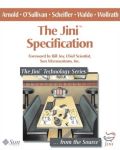I’ve been running test releases of Fedora 7, and lately the final release, for a number of months on my fairly new Lenovo Thinkpad X60. Here’s a brief summary of my experiences.
I’ve been using Fedora since 0.92 (Taroon), and while I’ve generally been happy with it, F7 is not exactly a model of stability or sleekness. Here’s a list of problems I’ve run into. My biggest problems so far have been with suspend and resume, and network drivers.
Suspend to RAM doesn’t work by default; when I resume, the screen is blank, and can’t be coaxed back to life save through a reboot. This is bug 243759. I came up with a fix (for my hardware, at least) in bug 237849. Richard Hughes’s fabulous HAL quirk site was the key to figuring out that one; thanks, Richard!
Suspend to disk (aka “hibernate”) works, some of the time. But it
interacts poorly with the crummy quality of the current e1000
ethernet driver.
The e1000 driver is flaky in F7. If I boot with a live ethernet
cable plugged in, it works. But if I plug one in after booting, it
fails to detect the carrier signal, and simply never notices the
cable. Bug
236956.
There is a workaround, of sorts. If I manually rmmod, then
modprobe the driver again, it will detect the carrier signal.
Unfortunately, after I do this, the next time that I try to suspend to
disk, all of my network-related processes get stuck in an unkillable
state, and suspend throws in the towel. Bug
245107.
If I try to use the screen backlight brightness control buttons, the screen goes black instead. Bug 220466.
If I disable the internal modem in the BIOS, sound no longer works. Bug 205603.
The new iwl3945 wireless driver simply falls over after a while,
depending on the network configuration it’s talking to. Bug
240826.
By the way, I’m not claiming that these problems are in any way the fault of Dave Jones, Chuck Ebbert, the HAL guys, or other Fedora maintainers. They have a thankless job trying to clean up the endless flood of new bugs in upstream kernels, not to mention cascades of junk hardware and buggy BIOSes from vendors. I’m frankly relieved every time the kernel boots reliably at all.
On top of these stability and reliability problems, performance has taken a bit of a beating. F7 seems to take quite a bit longer than earlier releases to boot, something Dave Jones has quantified. The post-boot bloat also rises: there are more kernel threads and userspace daemons running than ever before.
On the positive side, 3D graphics works quite well. I can actually run OpenGL apps like Google Earth and Second Life without crashes, and get decent frame rates out of them. And of course I can turn on wobbly windows and induce vertigo and nausea within minutes, where previously I had to resort to using Windows to get that sensation.



Leave a Reply